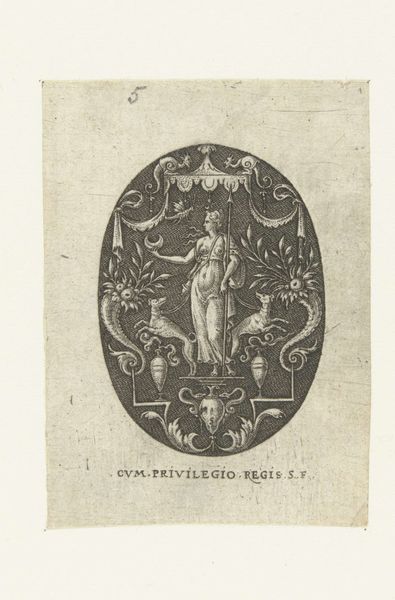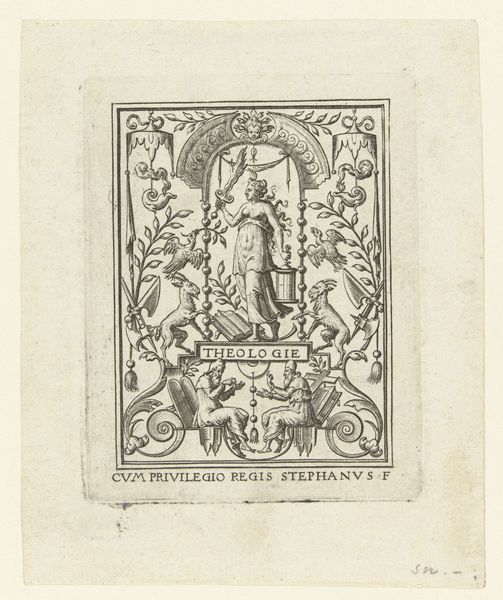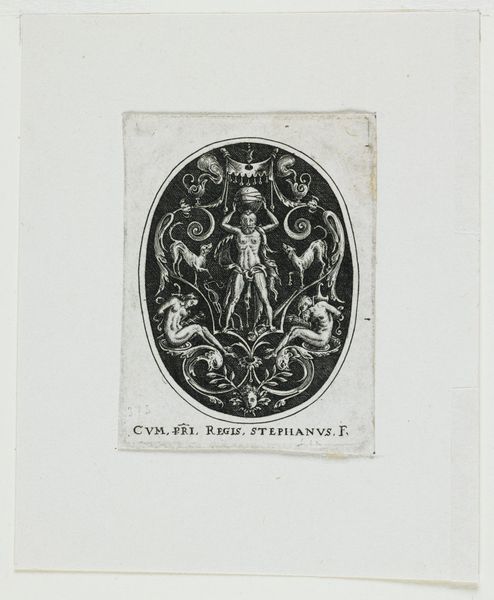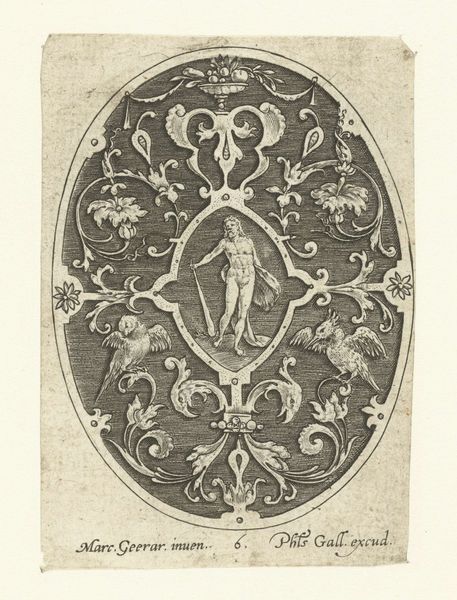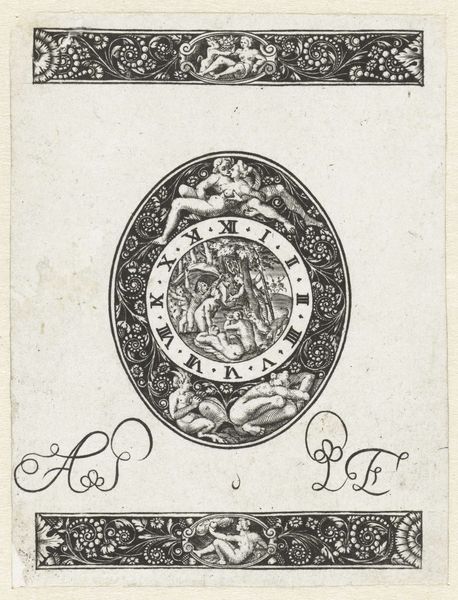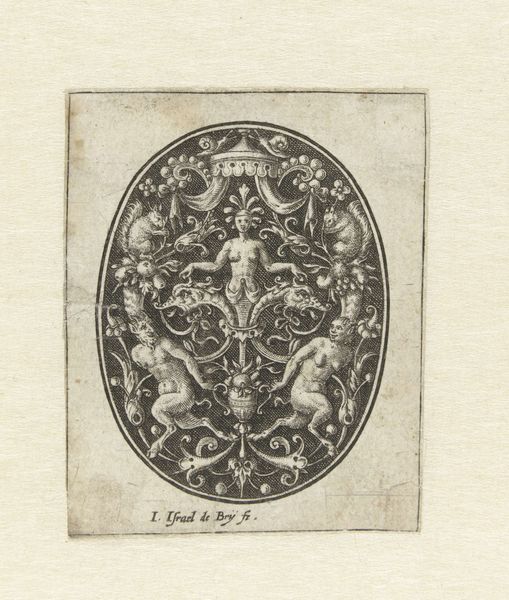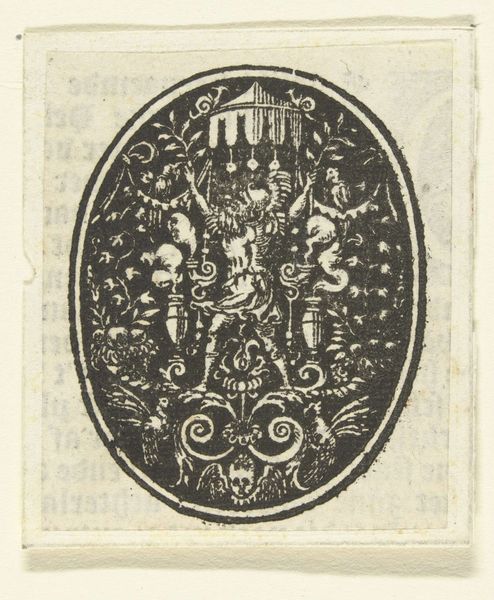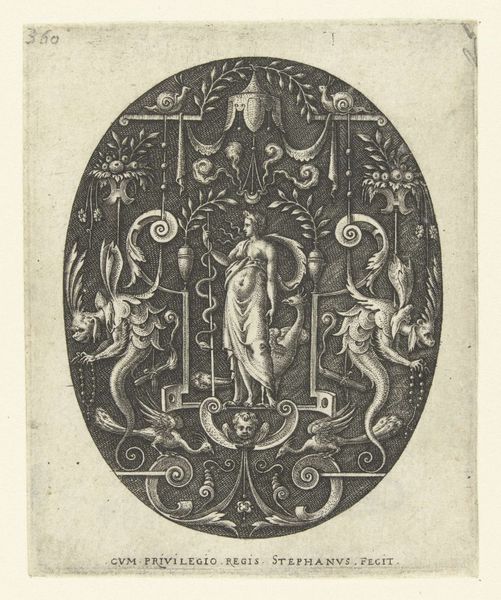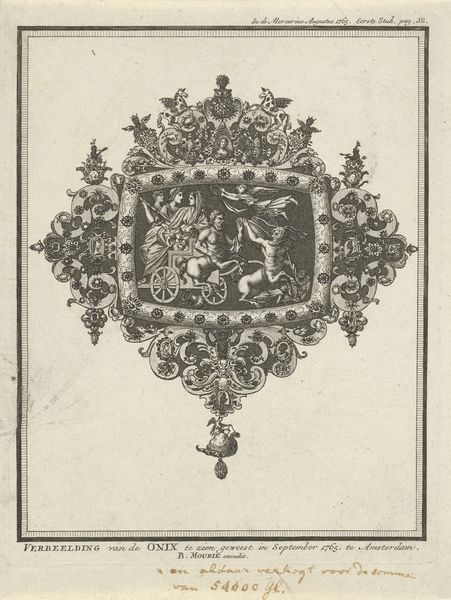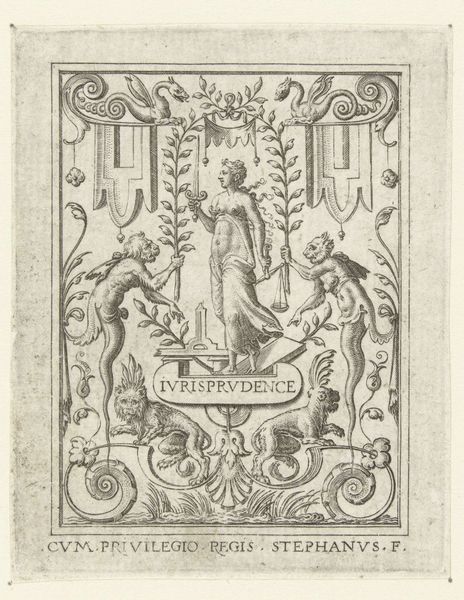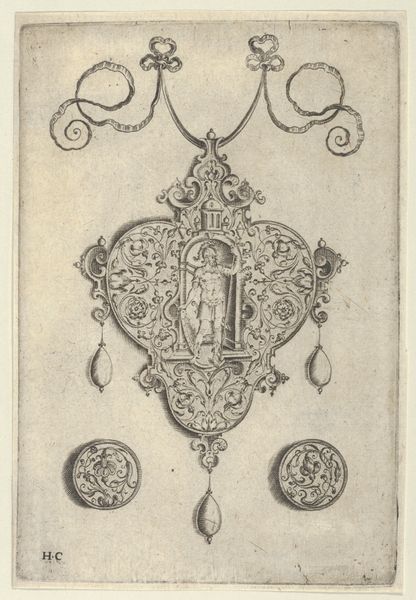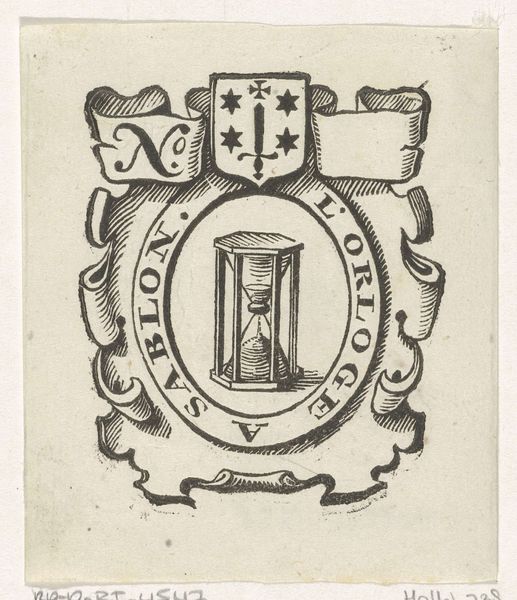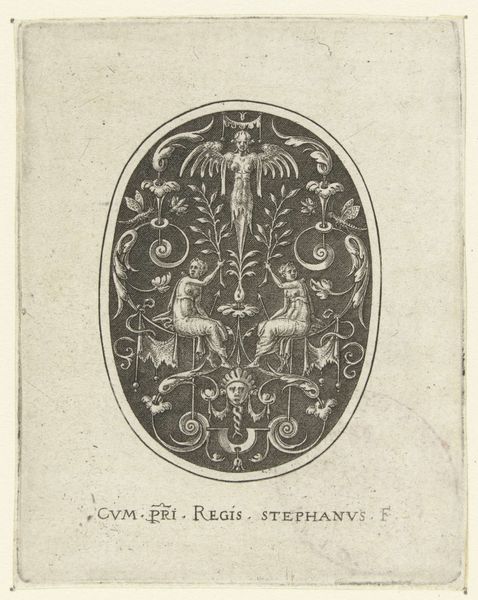
print, engraving
#
allegory
# print
#
mannerism
#
figuration
#
line
#
engraving
Dimensions: height 82 mm, width 63 mm
Copyright: Rijks Museum: Open Domain
This tiny print of Apollo under a baldachin was made by Etienne Delaune sometime in the 16th century. It’s an engraving, meaning that Delaune would have used a tool called a burin to cut lines into a copper plate, which was then inked and printed. The fineness of the lines speaks to Delaune’s tremendous skill. Look closely, and you’ll see the incredible detail he was able to achieve. Consider the texture of Apollo’s hair, the delicate rendering of the foliage, and the ornamental flourishes that surround the figure. This wasn’t just a feat of manual dexterity; it also required an intimate understanding of the material properties of copper, and how it would respond to the burin. Prints like this were luxury goods, miniature expressions of wealth and connoisseurship. In their own way, they show how hand skills could thrive even in an increasingly industrialized world. By focusing on the labor and skill involved, we can see how this print complicates any simple division between art and craft.
Comments
No comments
Be the first to comment and join the conversation on the ultimate creative platform.
